Recommended Reading
-
Islam, Politics and Change byISBN: 9789087282387Publication Date: 2016-05-15The decades-long rule of President Suharto in Indonesia was ended by violent protests throughout the country in the spring of 1998. Following Suharto's resignation, Indonesia successfully made the transition from an authoritarian state to a democracy, and this book explores the effects of that transformation on Islamic political organizations in Indonesia, which, for the first time in forty years, were legally allowed to campaign and promote their agenda. The contributors to this book consider the effects of these changes on the influence of orthodoxy and radicalism in Indonesian life and politics, the status of women, and the fate of religious minorities.
-
A Genealogy of Islamic Feminism : pattern and change in Indonesia by
Call Number: ASIA HQ1752 .A79 2018ISBN: 9781138723306Publication Date: 2018-03-29A Genealogy of Islamic Feminism offers a new insight on the changing relationship between Islam and feminism from the colonial era in the 1900s to the early 1990s in Indonesia. The book juxtaposes both colonial and postcolonial sites to show the changes and the patterns of the encounters between Islam and feminism within the global and local nexus. Global forces include Dutch colonialism, developmentalism, transnational feminism, and the United Nations¿ institutional bodies and their conferences. Local factors are comprised of women¿s movements, adat (customs), nationalism, the politics underlying the imposition of Pancasila ideology and maternal virtues, and variations of Islamic revivalism. Using a genealogical approach, the book examines the multifaceted encounters between Islam and feminism and attempts to rediscover egalitarianism in the Islamic tradition¿a concept which has been subjugated by hierarchical gender systems. The book also systematizes Muslim women¿s encounters with Islam and feminism into five phases: emancipation, association, development, integration, and proliferation eras. Each era discusses the confluence of global and local factors which shape the changing relationship between Islam and feminism and the way in which the discursive narrative of equality is debated and contextualized, progressing from biological determinism (kodrat) to the ethico-spiritual argument. Islamic feminism contributes to the rediscovery of Islam as the source of progress, the centering of women¿s agency through spiritual equality, and the reworking of the private and public spheres. This book will appeal to anyone with interest in international women¿s movements, interdisciplinary studies, cultural studies, women¿s studies, post-colonial studies, Islamic studies, and Asian studies.
General Information - Accessible
►Information based on The World Factbook - CIA
 Brunei
Brunei
[noun: Bruneian(s) * adjective: Bruneian]
- * Capital: Bandar Seri Begawan
- * Population: 422,675 (July 2014 est.)
- * Religions: Muslim (official) 78.8%, Christian 8.7%, Buddhist 7.8%, other (includes indigenous beliefs) 4.7% (2011 est.)
- * Languages: Malay (official), English, Chinese.
[Brunei : History, Islam, Society and Contemporary Issues. London : Routledge/Taylor & Francis Group, 2016.]
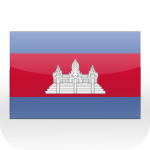 Cambodia
Cambodia
[noun: Cambodian(s) * adjective: Cambodian]
- * Capital: Phnom Penh
- * Population: 15,458,332 (July 2014 est.)
- * Muslim population: 240,000 (2010)
- * Religions: Buddhist (official) 96.9%, Muslim 1.9%, Christian 0.4%, other 0.8% (2008 est.)
- * Languages: Khmer (official) 96.3%, other 3.7% (2008 est.)
- * Ethnic groups: Khmer 90%, Vietnamese 5%, Chinese 1%, other 4%
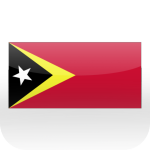 East Timor [Timor-Leste; officially the Democratic Republic of Timor-Leste]
East Timor [Timor-Leste; officially the Democratic Republic of Timor-Leste]
[noun: Timorese * adjective: Timorese]
- *Capital: Dili
- *Population: 1,201,542 note: other estimates range as low as 800,000 (July 2014 est.)
- *Muslim population: 1,000 (2010)
- *Religions: Roman Catholic 98%, Muslim 1%, Protestant 1% (2005)
- *Languages: Tetum (official), Portuguese (official), Indonesian, English note: there are about 16 indigenous languages; Tetum, Galole, Mambae, and Kemak are spoken by a significant portion of the population
- *Ethnic groups: (Malayo-Polynesian), Papuan, small Chinese minority
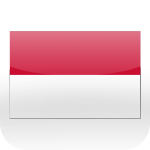 Indonesia
Indonesia
[noun: Indonesian(s) * adjective: Indonesian]
- *Capital: Jakarta
- *Population: 253,609,643 (July 2014 est.)
- *Muslim population: 204,847,00
- *Religions: Muslim 87.2%, Christian 7%, Roman Catholic 2.9%, Hindu 1.7%, other 0.9% (includes Buddhist and Confucian), unspecified 0.4% (2010 est.)
- *Languages: Bahasa Indonesia (official, modified form of Malay), English, Dutch, local dialects (of which the most widely spoken is Javanese) +note: more than 700 languages are used in Indonesia
- *Ethnic groups: Javanese 40.1%, Sundanese 15.5%, Malay 3.7%, Batak 3.6%, Madurese 3%, Betawi 2.9%, Minangkabau 2.7%, Buginese 2.7%, Bantenese 2%, Banjarese 1.7%, Balinese 1.7%, Acehnese 1.4%, Dayak 1.4%, Sasak 1.3%, Chinese 1.2%, other 15% (2010 est.)
 Laos
Laos
[noun: Lao(s) or Laotian(s) * adjective: Lao or Laotian]
- *Capital: Vientiane (Viangchan)
- *Population: 6,803,699 (July 2014 est.)
- *Muslim population: 1,000 (2010)
- *Religions: Buddhist 67%, Christian 1.5%, other and unspecified 31.5% (2005 census)
- *Languages: Lao (official), French, English, various ethnic languages
- *Ethnic groups: Lao 55%, Khmou 11%, Hmong 8%, other (over 100 minor ethnic groups) 26% (2005 census)
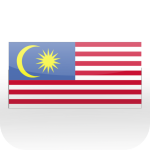 Malaysia
Malaysia
[noun: Malaysian(s) * adjective: Malaysian]
- *Capital: Kuala Lumpur
- *Population: 28,728,607 (July 2011 est.)
- *Muslim population: 17,139,000 (2010)
- *Religions: Muslim (official) 61.3%, Buddhist 19.8%, Christian 9.2%, Hindu 6.3%, Confucianism, Taoism, other traditional Chinese religions 1.3%, other 0.4%, none 0.8%, unspecified 1% (2010 est.)
- *Languages: Bahasa Malaysia (official), English, Chinese (Cantonese, Mandarin, Hokkien, Hakka, Hainan, Foochow), Tamil, Telugu, Malayalam, Panjabi, Thai. note: in East Malaysia there are several indigenous languages; most widely spoken are Iban and Kadazan
- *Ethnic groups: Malay 50.1%, Chinese 22.6%, indigenous 11.8%, Indian 6.7%, other 0.7%, non-citizens 8.2% (2010 est.)
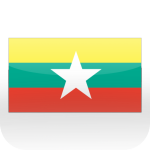 Myanmar [Burma]
Myanmar [Burma]
[noun: Burmese (singular and plural) * adjective: Burmese]
- *Capital: Rangoon (Yangon)
- *Population: 55,746,253 (July 2014 est.)
- *Muslim population: 1,900,000 (2010)
- *Religions: Buddhist 89%, Christian 4% (Baptist 3%, Roman Catholic 1%), Muslim 4%, animist 1%, other 2%
- *Languages: Burmese (official). note: minority ethnic groups have their own languages
- *Ethnic groups: Burman 68%, Shan 9%, Karen 7%, Rakhine 4%, Chinese 3%, Indian 2%, Mon 2%, other 5%
 Philippines
Philippines
[noun: Filipino(s) * adjective: Philippine]
- *Capital: Manila
- *Population: 107,668,231 (July 2014 est.)
- *Muslim population: 4,737,000 (2010)
- *Religions: Catholic Tagalog 28.1%, Cebuano 13.1%, Ilocano 9%, Bisaya/Binisaya 7.6%, Hiligaynon Ilonggo 7.5%, Bikol 6%, Waray 3.4%, other 25.3% (2000 census)
- *Languages: Filipino (official; based on Tagalog) and English (official); eight major dialects – Tagalog, Cebuano, Ilocano, Hiligaynon or Ilonggo, Bicol, Waray, Pampango, and Pangasinan
- *Ethnic groups: Tagalog 28.1%, Cebuano 13.1%, Ilocano 9%, Bisaya/Binisaya 7.6%, Hiligaynon Ilonggo 7.5%, Bikol 6%, Waray 3.4%, other 25.3% (2000 census)
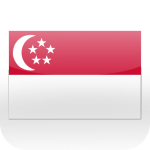 Singapore
Singapore
[noun: Singaporean(s) * adjective: Singapore]
- *Capital: Singapore
- *Population: 5,567,301 (July 2014 est.)
- *Muslim population: 721,000 (2010)
- *Religions: Buddhist 33.9%, Muslim 14.3%, Taoist 11.3%, Catholic 7.1%, Hindu 5.2%, other Christian 11%, other 0.7%, none 16.4% (2010 est.)
- *Languages: Mandarin (official) 36.3%, English (official) 29.8%, Malay (official) 11.9%, Hokkien 8.1%, Tamil (official) 4.4%, Cantonese 4.1%, Teochew 3.2%, other Indian languages 1.2%, other Chinese dialects 1.1%, other 1.1% (2010 est.)
- *Ethnic groups: Chinese 74.2%, Malay 13.3%, Indian 9.2%, other 3.3% (2013 est.)
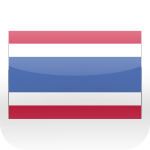 Thailand
Thailand
[noun: Thai (singular and plural) * adjective: Thai]
- *Capital: Bangkok
- *Population: 67,741,401 (July 2014 est.)
- *Muslim population: 3,952,000 (2010)
- *Religions: Buddhist (official) 93.6%, Muslim 4.9%, Christian 1.2%, other 0.2%, none 0.1% (2010 est.)
- *Languages: Thai (official) 90.7%, Burmese 1.3%, other 8% +note: English is a secondary language of the elite (2010 est.)
- *Ethnic groups: Thai 95.9%, Burmese 2%, other 1.3%, unspecified 0.9% (2010 est.)
 Viet Nam
Viet Nam
[noun: Vietnamese (singular and plural) * adjective: Vietnamese]
- *Capital: Hanoi (Ha Noi)
- *Population: 93,421,835 (July 2014 est.)
- *Muslim population: 160,000 (2010)
- *Religions: Buddhist 9.3%, Catholic 6.7%, Hoa Hao 1.5%, Cao Dai 1.1%, Protestant 0.5%, Muslim 0.1%, none 80.8% (1999 census).
- *Languages: Vietnamese (official), English (increasingly favored as a second language), some French, Chinese, and Khmer, mountain area languages (Mon-Khmer and Malayo-Polynesian)
- *Ethnic groups: Kinh (Viet) 85.7%, Tay 1.9%, Thai 1.8%, Muong 1.5%, Khmer 1.5%, Mong 1.2%, Nung 1.1%, others 5.3% (2009 census)